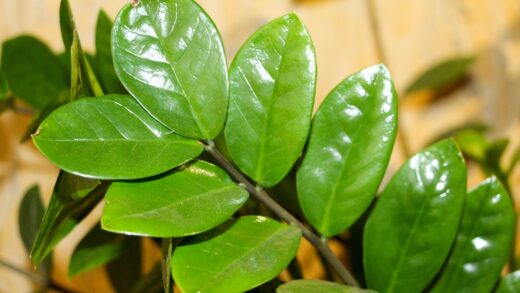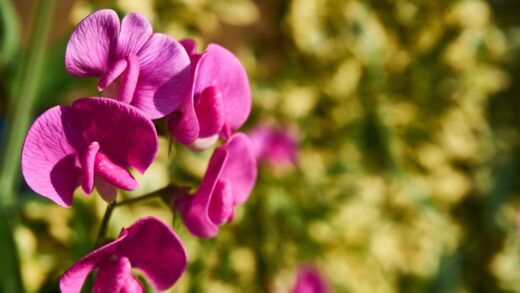Understanding and managing the water requirements of the Dutch iris is a fundamental aspect of its cultivation, directly influencing the health of the bulb and the quality of its floral display. These plants have a distinct lifecycle with changing water needs, and providing the right amount of moisture at the right time is crucial for success. Too much water can quickly lead to bulb rot, the most common issue plaguing these irises, while too little can result in stunted growth and poor flowering. Achieving the correct balance through thoughtful irrigation practices is the key to raising vigorous plants that produce spectacular blooms.
The water needs of the Dutch iris are most pronounced during its period of active growth, which typically begins in early spring as temperatures rise. From the moment the first green shoots emerge from the soil through the development of the flower stalk and the blooming period, a consistent supply of moisture is essential. During this phase, the plant is rapidly developing foliage and flowers, processes that require a significant amount of water. Inadequate moisture at this critical stage can lead to shorter flower stems, smaller blooms, and a general lack of vigor in the plant.
The goal is to maintain a soil environment that is consistently moist but never saturated or waterlogged. The best way to gauge this is by feeling the soil; if the top inch or two feels dry to the touch, it is a clear indication that irrigation is needed. This method is far more reliable than adhering to a rigid watering schedule, which cannot account for fluctuations in weather, such as unexpected rainfall or a period of intense heat and wind that can dry the soil out more quickly. Regular monitoring allows you to respond directly to the plant’s actual needs.
When it is time to water, the most effective technique is to provide a deep and thorough soaking. This encourages the plant’s roots to grow deeper into the soil profile in search of moisture, which builds a more resilient and drought-tolerant root system. Shallow, frequent waterings should be avoided, as they only wet the top layer of soil and promote the development of a shallow root system that is more vulnerable to drying out. A single, deep watering that moistens the soil to a depth of several inches is far more beneficial than multiple light sprinklings.
Irrigation during the growing season
During the spring growing season, the frequency of irrigation will be dictated by your specific environmental conditions. Factors such as soil type, temperature, sunlight exposure, and natural rainfall all play a significant role in how quickly the soil dries out. For instance, irises planted in a light, sandy soil will require more frequent watering than those in a heavier loam soil that retains moisture for longer. Similarly, a prolonged period of sunny, warm, and windy weather will increase the rate of evaporation and necessitate more regular irrigation.
More articles on this topic
As a general guideline, in the absence of significant rainfall, a deep watering once a week is often sufficient to meet the needs of actively growing Dutch irises. The aim is to deliver approximately one inch of water to the garden bed during each irrigation session. Using a rain gauge can be a helpful tool to measure both rainfall and the output of your sprinkler or irrigation system, allowing you to supplement natural precipitation accurately. This ensures the root zone receives adequate moisture without becoming oversaturated.
The method of water delivery can also impact the health of the plants. While overhead watering with a sprinkler is a common practice, it is not always the most ideal method for irises. Wetting the foliage, especially in the evening, can create a humid environment that is conducive to the development of fungal diseases like rust or leaf spot. Whenever possible, it is preferable to use a soaker hose or a drip irrigation system, which delivers water directly to the soil at the base of the plants, keeping the leaves and flowers dry and healthy.
If you must use an overhead sprinkler, it is best to do so in the morning. This timing allows the foliage to dry completely in the sun throughout the day, significantly reducing the risk of fungal pathogens taking hold. Watering in the evening leaves the foliage wet for an extended period overnight, which is the perfect condition for diseases to proliferate. Careful timing and application methods are simple yet effective strategies for maintaining plant health during the crucial growing season.
Watering after the blooming period
Once the Dutch iris has finished its spectacular flowering display, its water requirements undergo a dramatic shift. This post-bloom period is the beginning of the plant’s transition into its summer dormancy phase. It is critically important to begin reducing the frequency and amount of water you provide as soon as the last flowers fade. Continuing to water the plants with the same intensity as during their growth phase is a common mistake that can have dire consequences for the bulbs.
More articles on this topic
The primary goal after flowering is to allow the foliage to yellow and die back naturally, a process during which the bulb is maturing and storing energy for the next year. This process is facilitated by drier soil conditions. By gradually withholding water, you are mimicking the natural Mediterranean climate conditions from which these irises originate, where summers are typically hot and dry. This dry dormancy is essential for preventing the onset of bulb rot and other fungal diseases that thrive in warm, moist soil.
In most climates, natural rainfall during the summer will be more than sufficient to meet the minimal needs of the dormant bulbs. In fact, in regions with wet summers, it can be a challenge to keep the bulbs dry enough. For irises planted in garden beds, ensuring the soil is exceptionally well-draining is the best defense. For those grown in containers, it may be necessary to move the pots to a location sheltered from rain, such as under the eaves of a house, to enforce this necessary dry period.
Supplemental irrigation should be completely stopped once the foliage has turned yellow. The bulbs are now in a resting state and are not actively taking up water. They are highly vulnerable to decay if they are kept in wet soil during this time. By respecting this natural cycle and adjusting your watering practices accordingly, you provide the bulbs with the ideal conditions to cure and prepare for the next growing season, ensuring their long-term survival and performance.
The role of soil drainage
While proper irrigation techniques are vital, their effectiveness is fundamentally dependent on the quality of the soil’s drainage. Dutch iris bulbs are notoriously intolerant of “wet feet,” meaning they cannot survive in soil that remains waterlogged for extended periods. Excellent drainage is arguably the single most important factor in preventing bulb rot, which is the most common reason for the failure of these plants. No amount of careful watering can save a bulb that is planted in heavy, compacted, or poorly draining soil.
Before planting, it is essential to assess the drainage of your chosen site. A simple way to do this is to dig a hole about a foot deep and fill it with water. If the water drains away within a few hours, the drainage is likely adequate. However, if the water stands in the hole for a long time, it is a clear sign that the soil is too heavy and needs to be amended. Ignoring this sign and planting anyway will almost certainly lead to the loss of your bulbs.
To improve the drainage of heavy clay soils, you must incorporate materials that create a more porous structure. Organic matter is an excellent choice for this purpose. Amending the soil with generous amounts of compost, coir, or well-rotted leaf mold will help to break up the dense clay particles and create air spaces that allow excess water to move through more freely. For particularly heavy soils, adding inorganic materials like coarse sand or fine gravel can also significantly improve the soil’s drainage capacity.
Building raised beds is another highly effective solution for overcoming issues with poor drainage. By creating a planting area that is elevated above the surrounding ground level, you can fill it with a custom-blended soil mix that is perfectly suited to the needs of the Dutch iris. A mix of topsoil, compost, and coarse sand or perlite will create an ideal growing medium that provides fertility while ensuring that excess water always has a way to escape, guaranteeing that the bulbs remain healthy and free from the threat of rot.
Common watering mistakes to avoid
One of the most frequent and damaging mistakes in Dutch iris care is overwatering, especially after the blooming period has ended. It is a natural instinct for gardeners to want to provide continuous care, but for these bulbs, less is more once they enter dormancy. Continuing a regular watering schedule throughout the summer months creates the perfect warm and wet conditions for fungal and bacterial rot to destroy the bulbs. It is crucial to remember that a dry summer rest is a mandatory part of their lifecycle.
Another common error is applying water in a shallow and frequent manner. This practice encourages the development of a weak and shallow root system that is situated only in the top few inches of soil. These shallow roots make the plant much more susceptible to heat stress and drought, as the top layer of soil is the first to dry out. A plant with a deep root system, encouraged by deep and infrequent watering, can access moisture from lower down in the soil profile and is therefore much more resilient during dry spells.
Ignoring the specific characteristics of your garden’s soil can also lead to significant watering problems. A one-size-fits-all approach to irrigation does not work when comparing a fast-draining sandy soil to a moisture-retentive clay soil. Gardeners must adapt their watering frequency based on their soil type. Failing to account for this can lead to chronic underwatering in sandy soils or dangerous overwatering in heavy soils, both of which will negatively impact the health of the plants.
Finally, the timing of watering can be a critical mistake, particularly if using overhead methods. Watering late in the day or in the evening, which leaves the foliage wet overnight, is an open invitation for fungal diseases like rust and botrytis. These pathogens thrive in damp, still conditions. By simply shifting the irrigation time to the morning, you allow the sun and air movement to dry the leaves quickly, drastically reducing the risk of disease and contributing to the overall health and longevity of your Dutch iris planting.
📷: Oleg Yunakov via Wikipedia CC BY-SA 4.0


















